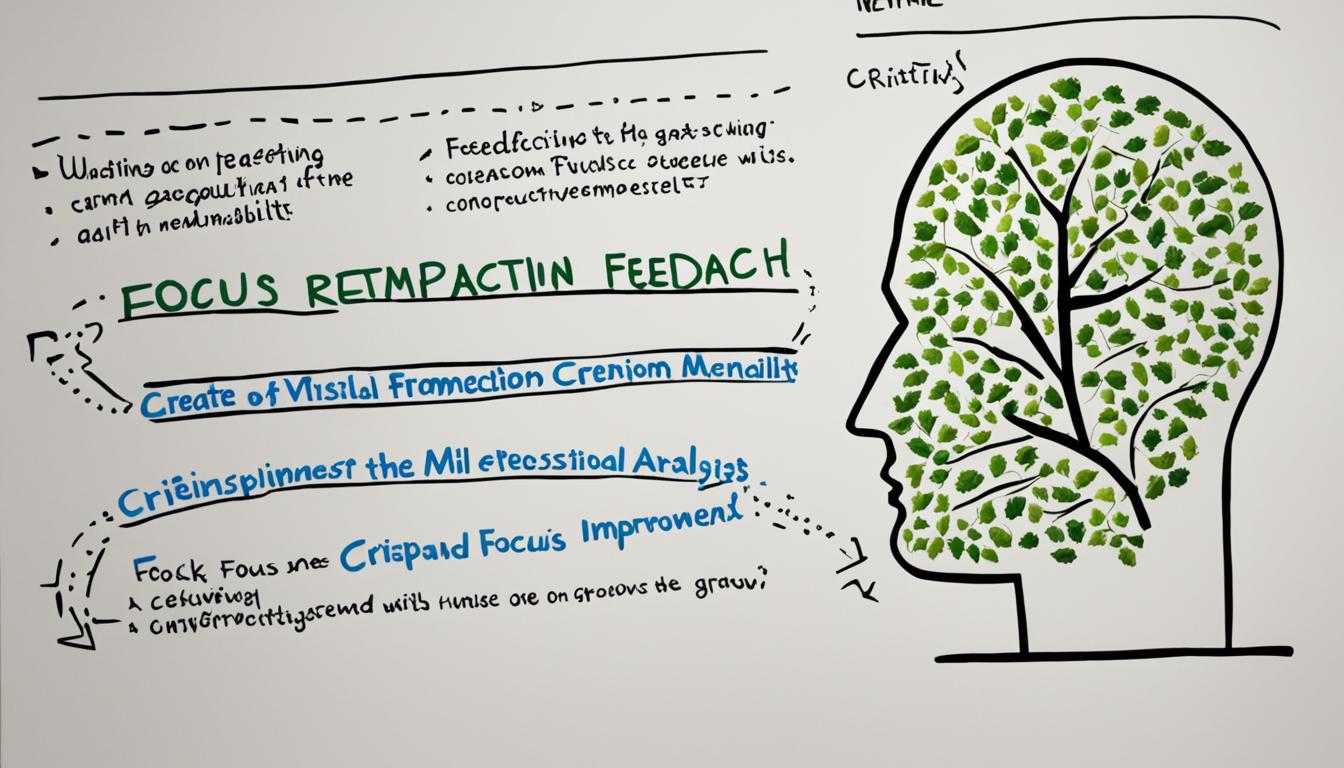In the world of sports, slumps and performance plateaus are common challenges that athletes face. These periods of stagnation can be frustrating and demoralizing, but they are not insurmountable. With the right strategies and mindset, athletes can overcome slumps and achieve peak performance.
Dealing with slumps and performance plateaus requires a comprehensive approach. It is essential to identify the root cause of the slump, whether it’s physical or mental, as each requires a different approach for improvement. By understanding the factors that contribute to a slump, athletes can implement targeted strategies to break free from the cycle and reach their full potential.
In this article, we will explore tips and strategies for overcoming slumps, as well as the importance of resilience in bouncing back from setbacks. We will also examine a case study of the Columbus Blue Jackets, a professional hockey team that faced a challenging slump and how they worked towards overcoming it.
Key Takeaways:
- Identify whether the slump is physical or mental to determine the appropriate approach for improvement.
- Focus on performance rather than results to alleviate pressure and foster progress.
- Avoid comparing yourself to others and focus on your own journey towards improvement.
- Stay motivated and committed to your goals, even during challenging times.
- Develop resilience to overcome setbacks and maintain a positive mindset.
Identifying the Root Cause of Slumps
Slumps can manifest in two forms: physical and mental. Physical slumps often occur as a result of recovering from injury or making changes to mechanics. Overcoming these slumps demands patience and time to rebuild physical strength and regain confidence in one’s abilities. Mental slumps, on the other hand, are more intricate to overcome if the underlying causes are not recognized and addressed.
In order to effectively combat mental slumps, it is crucial to identify the various factors that contribute to their development or prolongation. Common mental game challenges that can lead to or extend slumps include:
- Low self-confidence: A lack of belief in one’s capabilities and performance can impede progress.
- Frustration: Feelings of frustration can arise from slow progress or failure to meet personal expectations.
- Comfort zones: Staying within one’s comfort zone can hinder growth and prevent the exploration of new strategies and techniques.
- Lack of motivation: A decrease in motivation and drive can stifle performance and hinder progress.
- Over-training: Exhausting oneself physically and mentally without allowing sufficient recovery and rest can lead to mental burnout and decreased performance.
- Self-esteem issues: Low self-esteem and negative self-talk can have a detrimental impact on an athlete’s mindset and performance.
To break free from mental slumps, it is essential to tackle each underlying cause head-on. Recognizing and understanding these challenges enable athletes to develop effective strategies and implement targeted solutions. By navigating the labyrinth of mental slumps, athletes can regain confidence, motivation, and focus, conquering their performance plateau.
Basketball player Michael Jordan once said:
“I’ve failed over and over again in my life, and that is why I succeed.”
Strategies for Breaking Free from Slumps
Breaking free from a performance slump requires a strategic approach. Here are some effective strategies that can help you overcome slumps and bounce back from setbacks:
- Focus on Performance: Instead of obsessing over results, shift your focus to the process and the actions that lead to good performance. By setting performance-based goals and concentrating on executing your skills to the best of your ability, you can regain your confidence and improve your chances of success.
- Avoid Comparisons: Comparing yourself to others can be detrimental to your mental state during a slump. Remember, everyone’s journey is unique, and comparing your progress to someone else’s can lead to unnecessary stress and self-doubt. Focus on your own growth and development instead.
- Stay Motivated and Committed: Slumps can be mentally draining, but it’s important to stay motivated and committed to your goals. Use positive affirmations, visualize success, and remind yourself why you love your sport. Surround yourself with a supportive network of coaches, teammates, and loved ones who can cheer you on and provide encouragement during tough times.
- Reframe Your Mindset: Instead of viewing each game or performance as a make-or-break moment, see it as a new opportunity for success. Adopt a growth mindset and embrace challenges as learning experiences. Remember, setbacks are temporary, and with the right mindset, you can overcome them.
- Play to Your Strengths: Identify your strengths and leverage them to your advantage. Focus on the aspects of your game that you excel at and find ways to maximize their impact. By playing to your strengths, you can regain confidence and build momentum toward breaking free from the slump.
- Avoid Overthinking and Trying Too Hard: It’s natural to want to make up for a slump by overanalyzing every move and putting excessive pressure on yourself. However, this can lead to paralysis by analysis and hinder your performance. Trust in your training and skills, and allow your instincts to guide you.
Case Study: The Columbus Blue Jackets’ Slump
“We were overthinking and trying to force the perfect opportunity instead of taking shots. That’s a confidence issue. We’ve got to find it as a team and as individuals.” – Nick Foligno, Head Coach of the Columbus Blue Jackets
One notable case study is the Columbus Blue Jackets, a professional hockey team, who experienced a prolonged slump during a season. Head Coach Nick Foligno identified that the players were overthinking their play and seeking the elusive perfect opportunity to score rather than taking shots. This lack of confidence and mindset greatly affected their performance and mental toughness. To break free from the slump, the team needed to develop more confidence, trust their abilities, and adopt a more proactive mindset.
| Strategies for Breaking Free from Slumps | |
|---|---|
| 1. | Focus on performance rather than results |
| 2. | Avoid comparing yourself to others |
| 3. | Stay motivated and committed to your goals |
| 4. | Reframe your mindset and view each performance as a new opportunity for success |
| 5. | Play to your strengths and build confidence |
| 6. | Avoid overthinking and trust your skills |
By implementing these strategies and adopting a resilient mindset, you can break free from slumps, regain confidence, and achieve peak performance in your sport.
Case Study: The Columbus Blue Jackets’ Slump
The Columbus Blue Jackets, a professional hockey team, went through a challenging period marked by a significant performance slump during a particular season. Led by their head coach, Nick Foligno, the team embarked on a journey to identify the factors contributing to their slump and develop strategies to overcome it.
“We noticed that our players were overthinking their play, always searching for the perfect opportunity to score instead of taking shots,” said Coach Foligno.
This lack of confidence and the self-imposed pressure to make every play perfect greatly affected the team’s performance and mental toughness. It was evident that a change in mindset and the development of greater confidence were necessary for the Columbus Blue Jackets to break free from their slump.
Determined to find a solution, the team focused on improving their mental game. They worked closely with sports psychologists and implemented specific techniques to build confidence, foster a positive mindset, and enhance their performance on the ice. Through daily mindset training sessions, the players learned to trust their skills and instincts, enabling them to take more shots and seize scoring opportunities.
Results:
The Columbus Blue Jackets’ dedicated efforts and the shift in their mindset yielded promising outcomes. The team gradually regained their confidence and mental toughness, allowing them to overcome their slump and start performing at their peak once again. By the end of the season, they had successfully turned their performance around, showcasing their true potential and resilience.

Key Takeaways:
- Overthinking and the pursuit of perfection can hinder performance.
- Developing confidence and a positive mindset are crucial to overcome slumps.
- Working with sports psychologists and implementing mindset training can be effective strategies.
- Trusting in skills and instincts allows athletes to seize opportunities and improve performance.
The Columbus Blue Jackets’ case study serves as a testament to the importance of mindset and confidence in performance. It highlights the significant impact that a slump can have on a team and the determination required to break free from it. By making the necessary mindset adjustments and prioritizing confidence, athletes can bounce back from setbacks and achieve peak performance once again.
Tips for Overcoming Performance Plateaus
When athletes reach a certain level, they may find themselves facing performance plateaus, where further progress becomes challenging. To overcome these plateaus and continue improving, we recommend implementing the following strategies:
1. Focus on Performance Instead of Outcomes
Rather than obsessing over the end result, shift your focus to the process and the performance itself. By concentrating on giving your best effort, executing your skills, and making the right decisions in each moment, you can break free from the plateau and strive for continuous improvement. Remember, consistent progress in your performance will eventually lead to positive outcomes.
2. Set Small Goals for Improvement
Breaking down your larger goals into smaller, achievable ones can help you stay motivated and track your progress more effectively. Set specific performance-related targets that are challenging yet attainable, such as improving your accuracy, reducing your response time, or mastering a new technique. Celebrate each milestone reached, as they will fuel your motivation to continue pushing forward.
3. Seek Outside Guidance or Coaching
Don’t be afraid to seek guidance from knowledgeable individuals who can provide valuable insights and techniques to help you overcome the plateau. Whether it’s a coach, mentor, or sports psychologist, their expertise can provide fresh perspectives and introduce new strategies to elevate your performance. Collaborating with them can unlock your full potential and accelerate your progress.
4. Stay Motivated and Committed to Improvement
Consistency is key when trying to overcome performance plateaus. It’s crucial to maintain a high level of motivation and dedication, even when progress seems slow or stagnant. Remind yourself of your passion for the sport and the reasons why you started. Find sources of inspiration, set reminders of your goals, and surround yourself with a support system that encourages and challenges you to keep going.
5. Practice Self-Reflection and Self-Evaluation
Regular self-reflection allows you to assess your strengths, weaknesses, and areas for growth. Take time to analyze your performance objectively, identifying areas where you can make improvements. Celebrate your successes, learn from your mistakes, and adjust your approach accordingly. Engaging in deliberate practice, focusing on specific aspects of your performance, can lead to breakthroughs and propel you past the plateau.
6. Embrace a Growth Mindset
Adopting a growth mindset is essential in overcoming performance plateaus. Believe in your ability to improve and view challenges as opportunities for growth rather than setbacks. Embrace the idea that with effort, perseverance, and the right strategies, you can continually enhance your skills and reach new heights. Stay positive, learn from setbacks, and maintain unwavering confidence in your journey toward peak performance.
By utilizing these tips and strategies, you can overcome performance plateaus and continue your upward trajectory toward peak performance. Remember, improvement is a journey, and each step forward brings you closer to your full potential.
| Common Challenges | Strategies |
|---|---|
| Low self-confidence | Seek support from coaches, sports psychologists, and build self-belief through positive reinforcement |
| Frustration | Focus on the process, set small goals, and celebrate milestones |
| Comfort zones | Challenge yourself with new techniques or drills to push beyond your boundaries |
| Lack of motivation | Find sources of inspiration, set reminders of your goals, and surround yourself with a supportive network |
| Trying too hard | Practice relaxation techniques, focus on the present moment, and maintain a balanced approach |
The Power of Resilience in Overcoming Slumps
Resilience is a powerful quality that can help athletes overcome slumps and bounce back from setbacks. When faced with failures or setbacks, resilient athletes have the ability to maintain a positive mindset and keep pushing forward towards their goals. They possess the mental toughness necessary to navigate challenging times and emerge stronger than before.
Developing resilience requires practicing mental toughness and learning from mistakes. It involves embracing challenges as opportunities for growth and adapting strategies to overcome obstacles. Resilient athletes understand that setbacks are not definitive, but rather temporary roadblocks on their journey to success.
“Resilience is not only about bouncing back, but also about using setbacks as opportunities to learn and grow.” – Serena Williams
Resilience is particularly crucial in sports, where athletes face constant pressure to perform at their best. The ability to bounce back from a defeat, a poor performance, or an injury is what sets the champions apart. It allows athletes to stay focused on their path to peak performance, even in the face of adversity.
By cultivating resilience, athletes can develop the mental strength needed to overcome slumps. They can effectively navigate through challenging times, maintaining their motivation and determination. Resilience enables athletes to bounce back stronger and more prepared to face future challenges.

Building Resilience: Strategies for Athletes
Here are some strategies that athletes can employ to cultivate resilience:
- Practice self-reflection and self-evaluation to identify areas for growth.
- Develop a growth mindset, believing that abilities can be improved through effort and practice.
- Set realistic goals and break them down into manageable steps.
- Seek support from coaches, teammates, and sports psychologists.
- Maintain a positive and optimistic outlook, focusing on solutions rather than dwelling on problems.
- Learn from setbacks and use them as opportunities for learning and improvement.
- Stay physically and mentally fit, prioritizing self-care and well-being.
- Find inspiration from role models who have overcome similar challenges.
The Benefits of Resilience in Sports
Resilience not only helps athletes overcome slumps but also provides a range of other benefits:
| Benefit | Description |
|---|---|
| Improved Mental Toughness | Resilience builds mental toughness, enabling athletes to face adversity head-on and perform under pressure. |
| Increased Confidence | Resilient athletes have greater confidence in their abilities, allowing them to perform at their peak even in challenging situations. |
| Enhanced Focus | Resilience helps athletes stay focused on their goals and maintain concentration, regardless of distractions or setbacks. |
| Greater Adaptability | Resilient athletes are more adaptable and able to adjust their strategies according to changing circumstances. |
| Improved Decision Making | Resilience enhances critical thinking skills, allowing athletes to make effective decisions even in high-pressure situations. |
Overall, resilience is a key attribute that can empower athletes to overcome slumps, bounce back from setbacks, and achieve peak performance. By actively working to develop resilience, athletes can build mental toughness, maintain a positive mindset, and stay focused on their path to success.
Conclusion
Slumps and performance plateaus are common in sports, but they can be overcome with the right strategies and mindset. By identifying the root cause of slumps, athletes can address the underlying issues and develop targeted approaches for improvement.
To break free from slumps, it is crucial to shift the focus from results to performance. By concentrating on honing skills, executing strategies, and giving their best effort, athletes can maintain a positive mindset and build momentum towards peak performance success.
Staying motivated and committed to the process of improvement is key. Setting small goals for progress allows athletes to track their development and celebrate incremental achievements. Seeking guidance and coaching from trusted mentors or professionals can also provide valuable insights and fresh perspectives.
Lastly, resilience is a fundamental quality in overcoming slumps and plateaus. By embracing challenges, learning from setbacks, and adapting strategies, athletes develop mental toughness and bounce back stronger. It is essential to remember that every game or performance represents a new opportunity for success. Trusting in the skills and training that have been cultivated will further bolster confidence and pave the way for peak performance.
FAQ
What are some common causes of performance slumps in athletes?
Performance slumps in athletes can be caused by factors such as low self-confidence, frustration with progress, comfort zones, lack of motivation, and trying too hard.
How can athletes break free from performance slumps?
Athletes can break free from performance slumps by focusing on performance rather than results, avoiding comparisons to others, staying motivated, and reframing their mindset to view each game or performance as a new opportunity for success.
How can mental slumps in athletes be overcome?
Mental slumps in athletes can be overcome by identifying the underlying causes, such as low self-confidence or frustration, and addressing them through strategies like building confidence, setting small achievable goals, and seeking support or guidance.
What can athletes do to overcome physical slumps?
To overcome physical slumps, athletes need patience and time to recover from injury or make necessary changes to their mechanics. It is important to trust in the process and work with coaches or trainers to restore physical performance.
Can external factors contribute to performance slumps?
Yes, external factors such as over-training, outside pressures, or lack of support can contribute to performance slumps. It is important to identify and address these factors in order to overcome the slump.
How can athletes overcome performance plateaus?
Athletes can overcome performance plateaus by focusing on performance instead of outcomes, setting small goals for improvement, seeking outside guidance or coaching, staying motivated, and practicing self-reflection and self-evaluation.
What role does resilience play in overcoming slumps?
Resilience plays a crucial role in overcoming slumps as it allows athletes to bounce back from failures and setbacks, maintain a positive mindset, and keep pushing forward. Developing resilience requires mental toughness, learning from mistakes, and adapting to challenges.
How can athletes stay motivated during a slump?
To stay motivated during a slump, athletes can remind themselves of their goals, focus on the bigger picture, seek support from teammates or coaches, and find ways to rekindle their passion for the sport.



